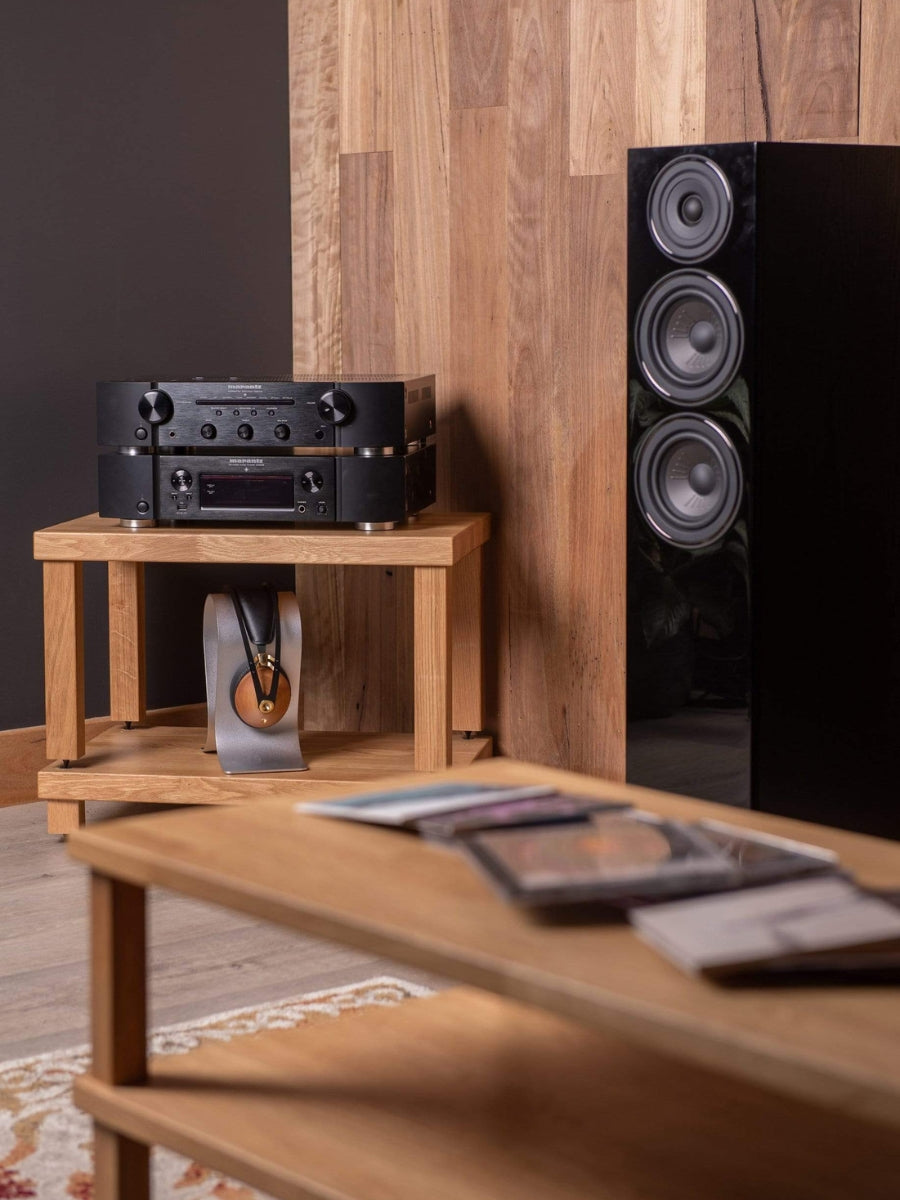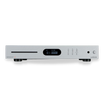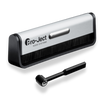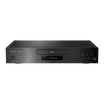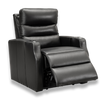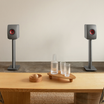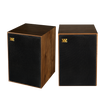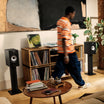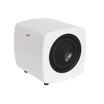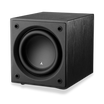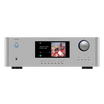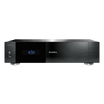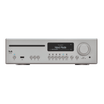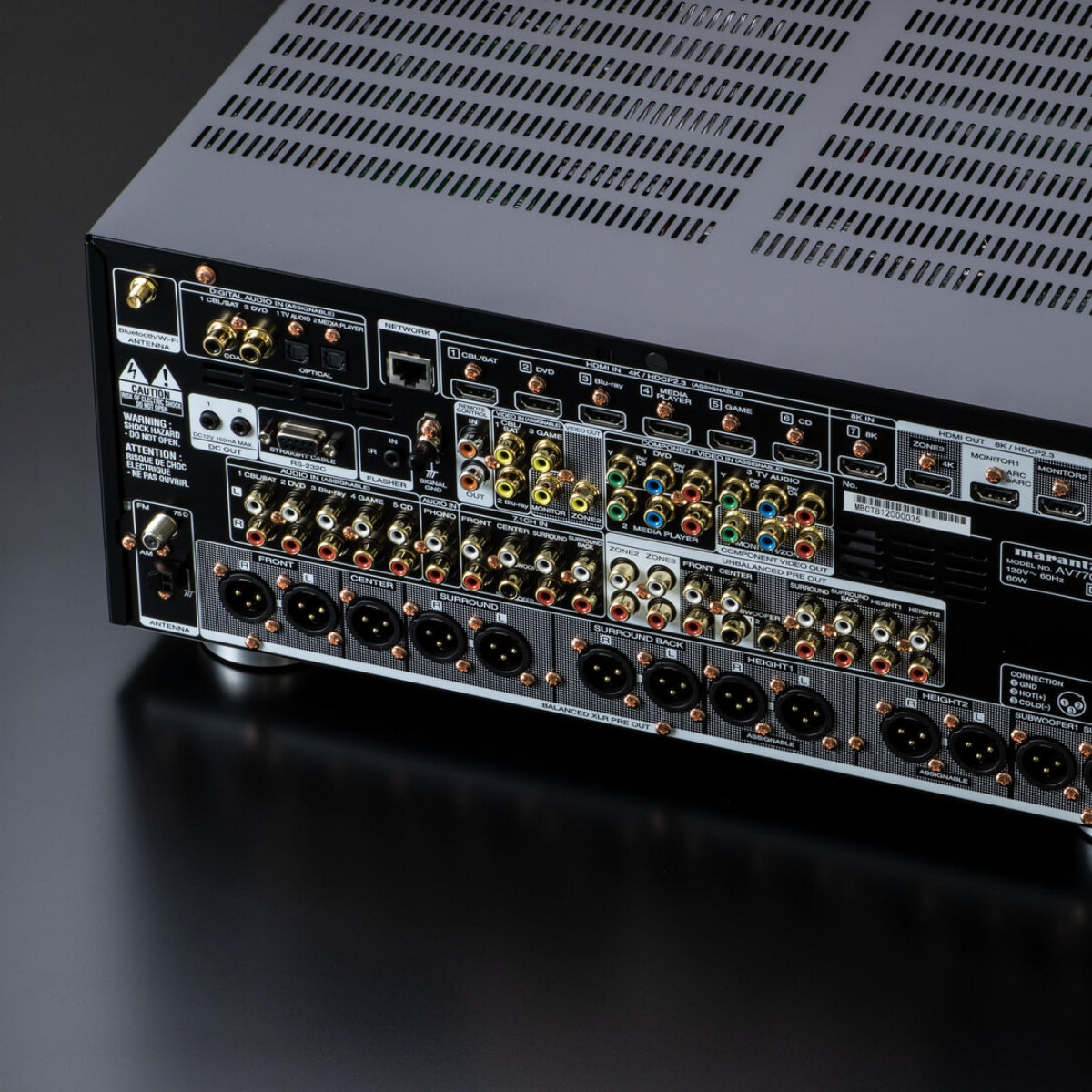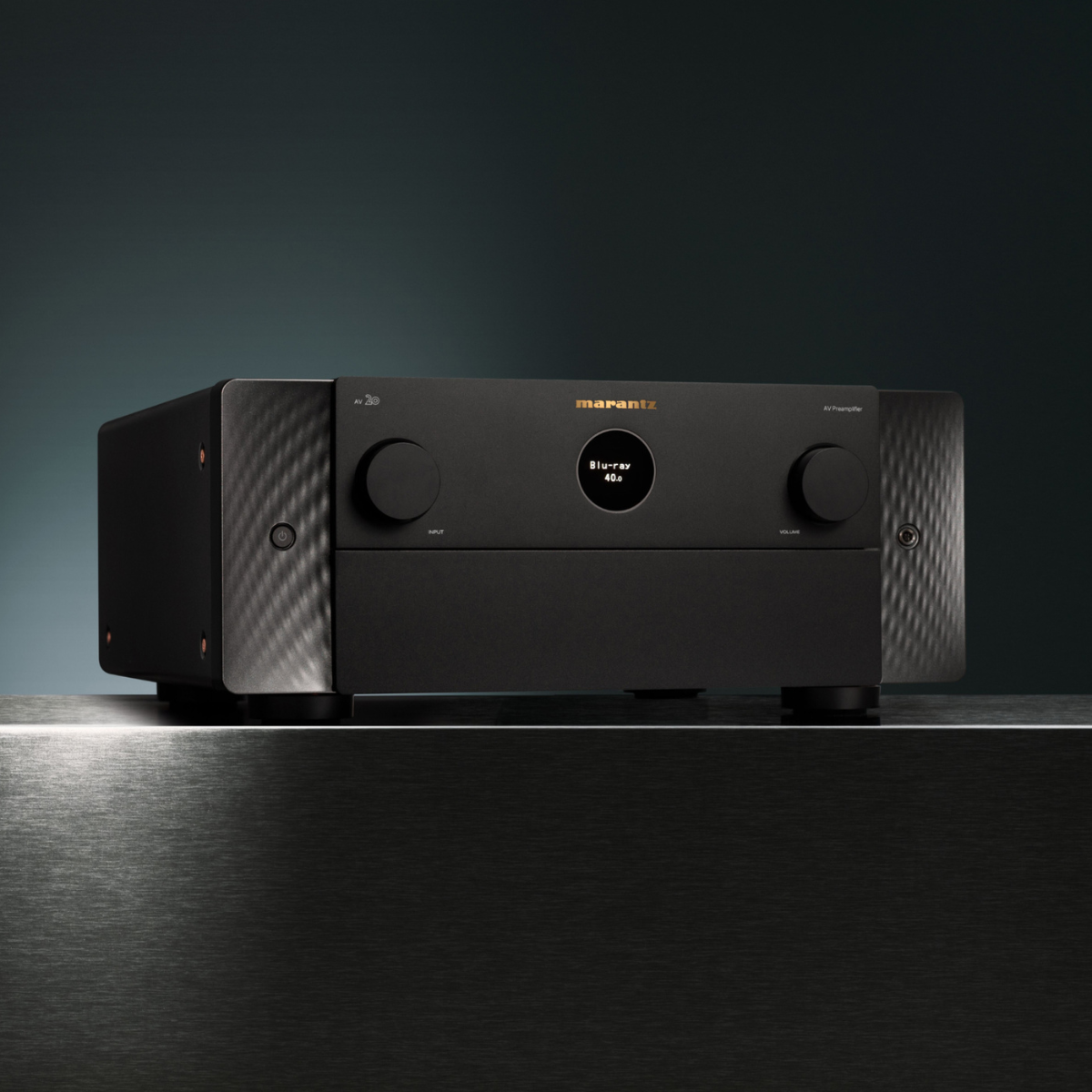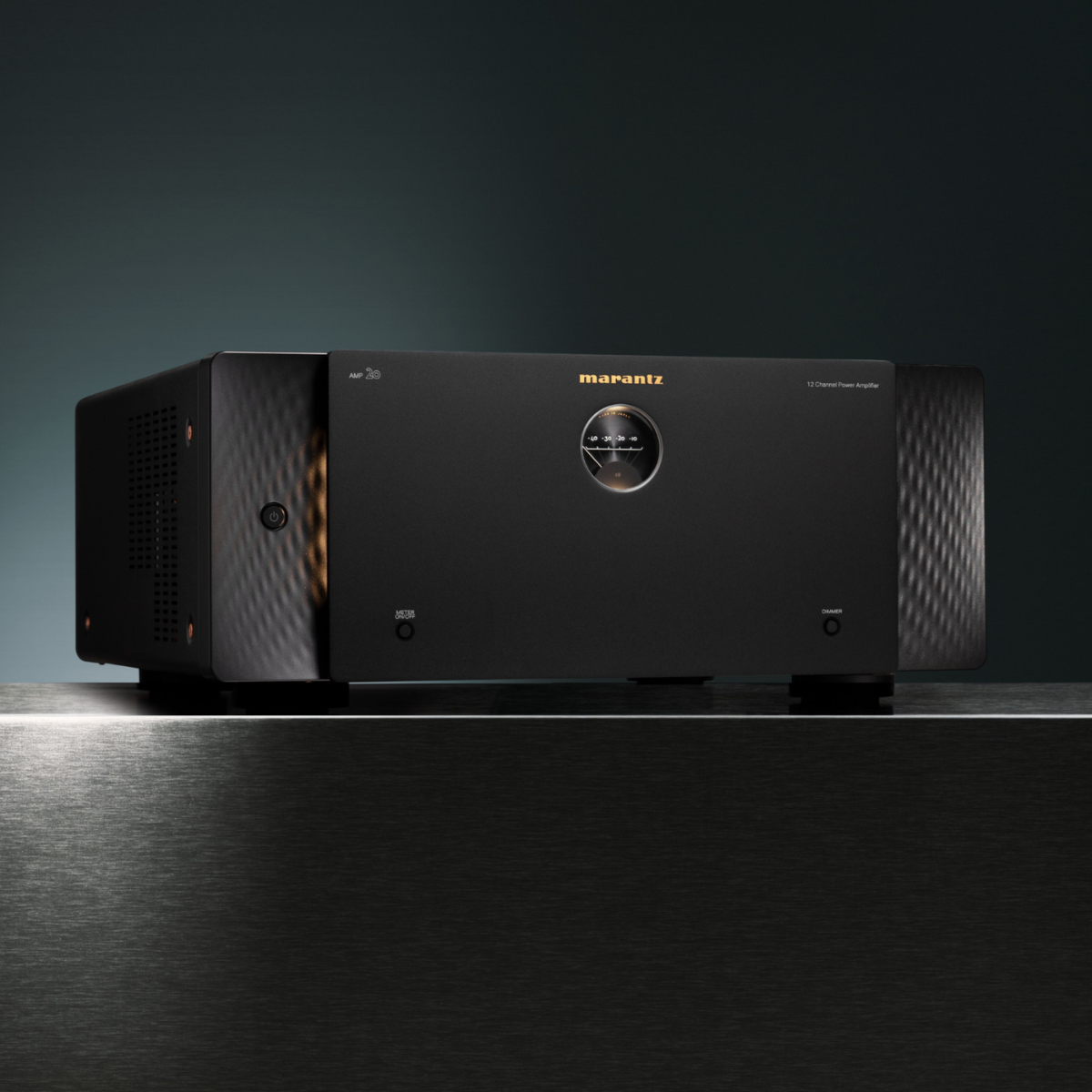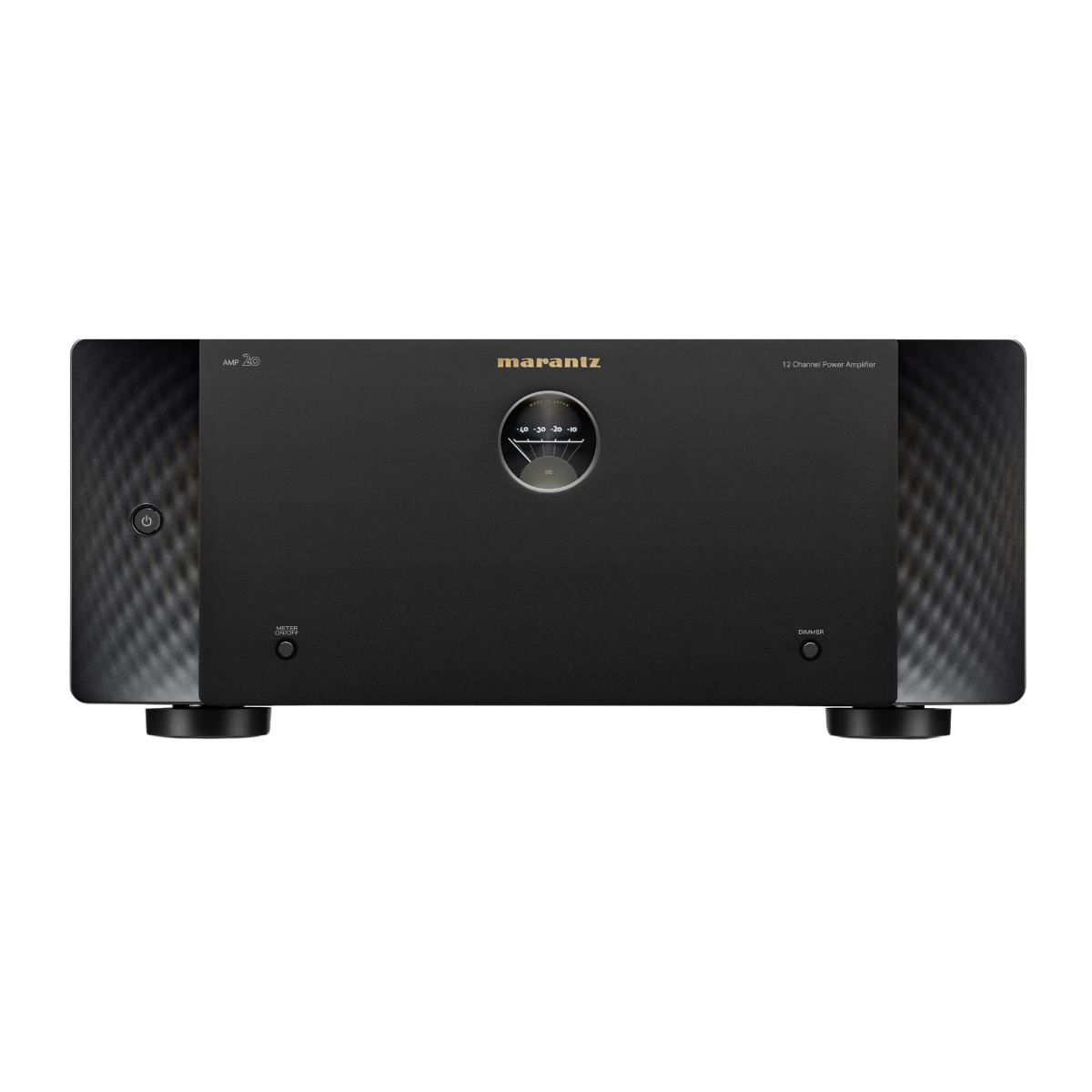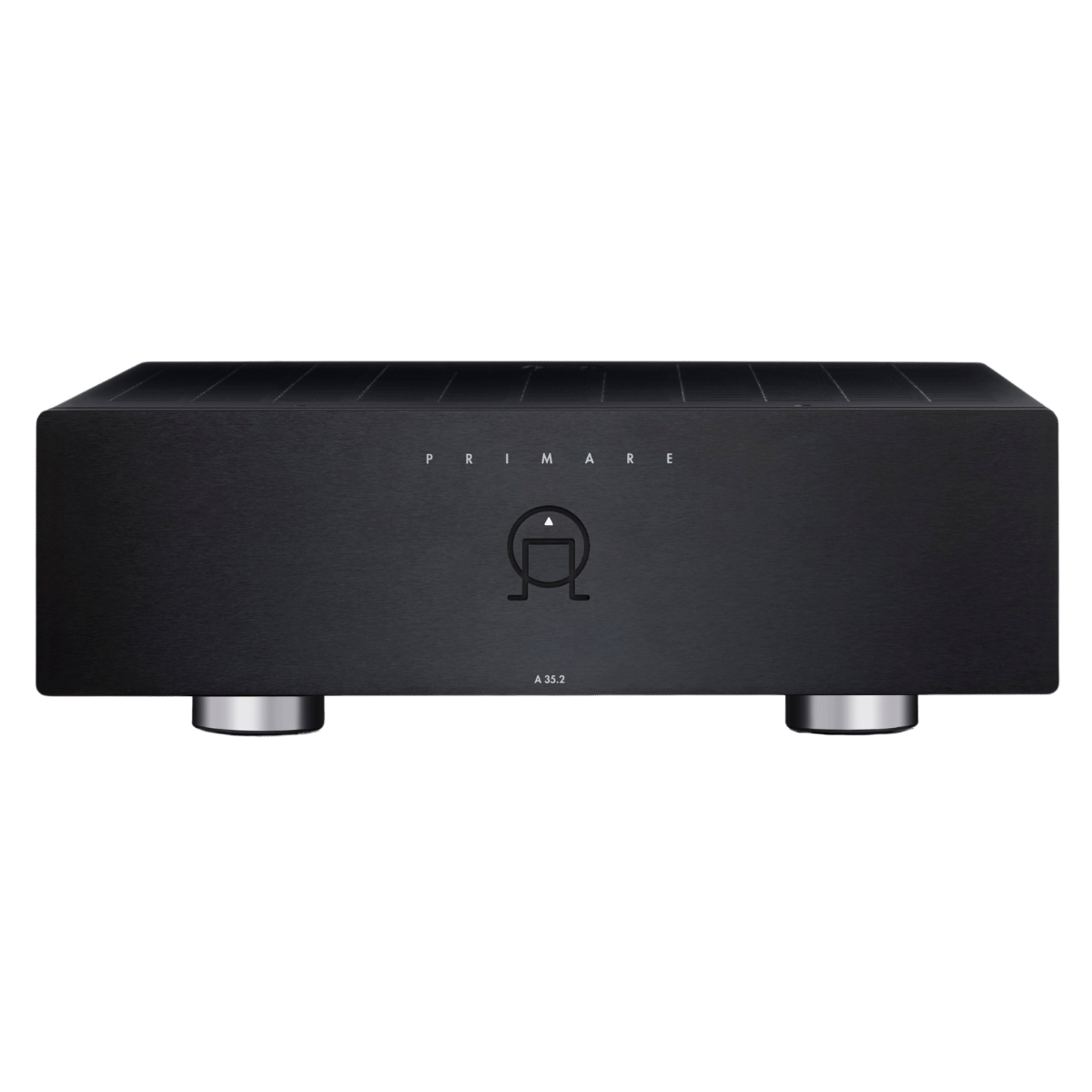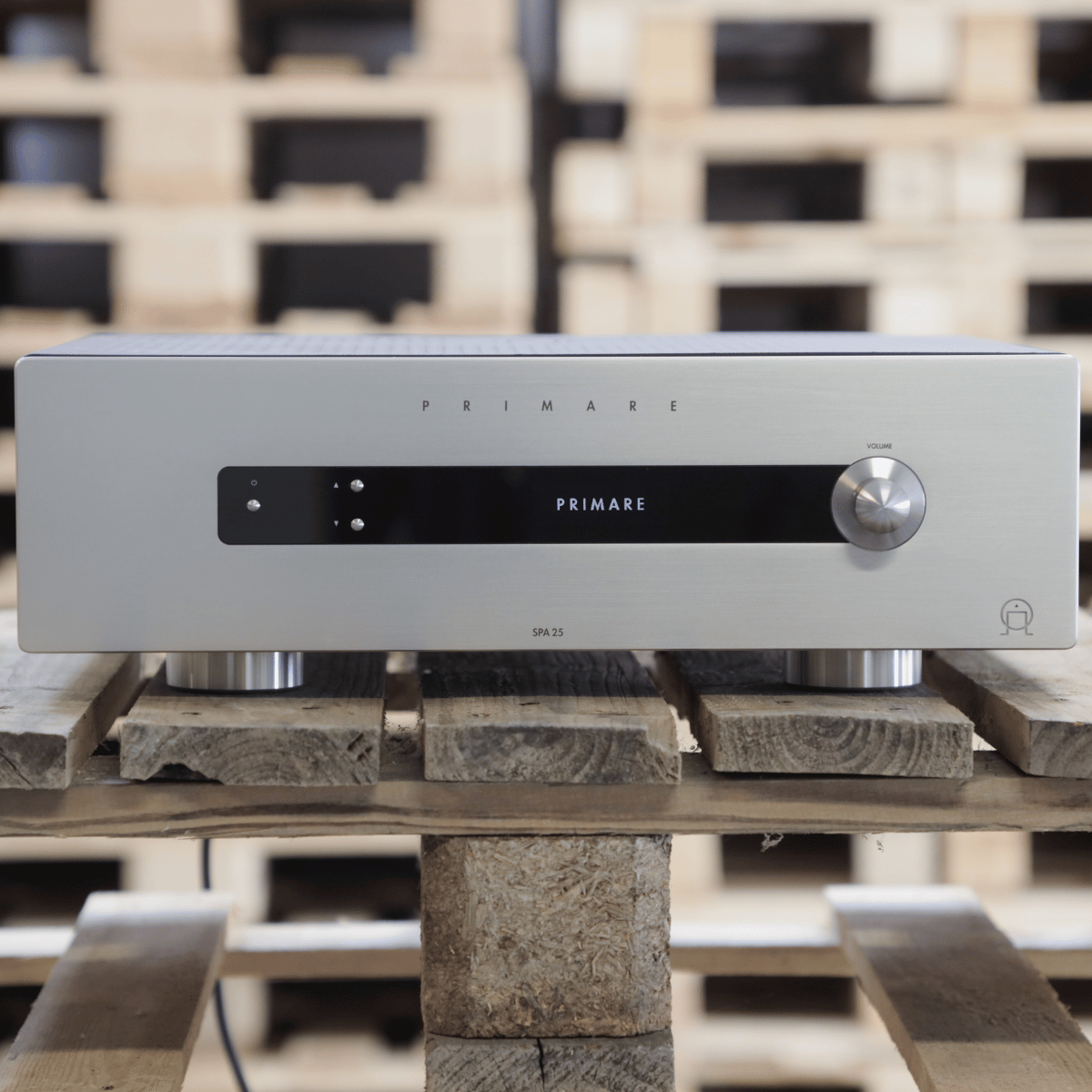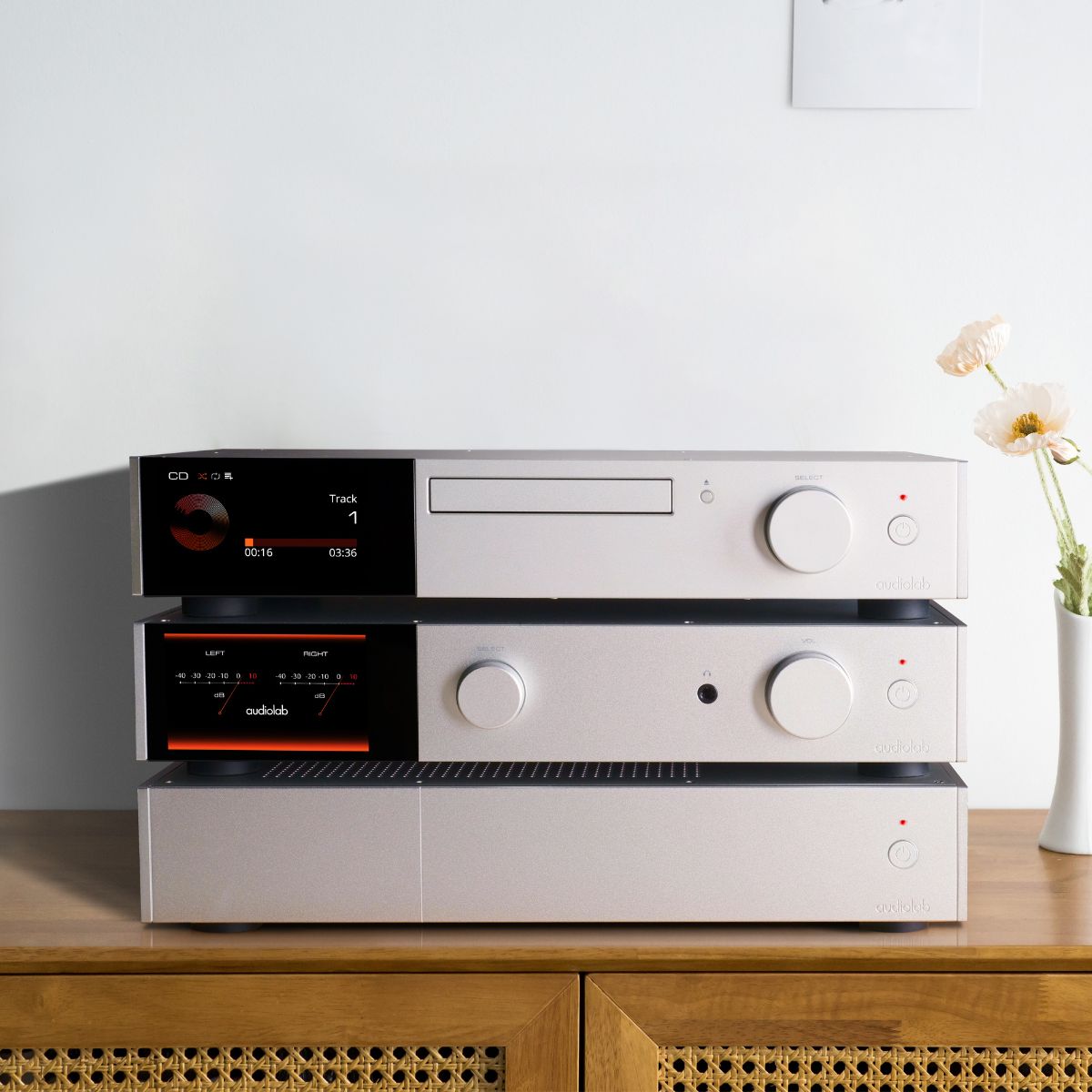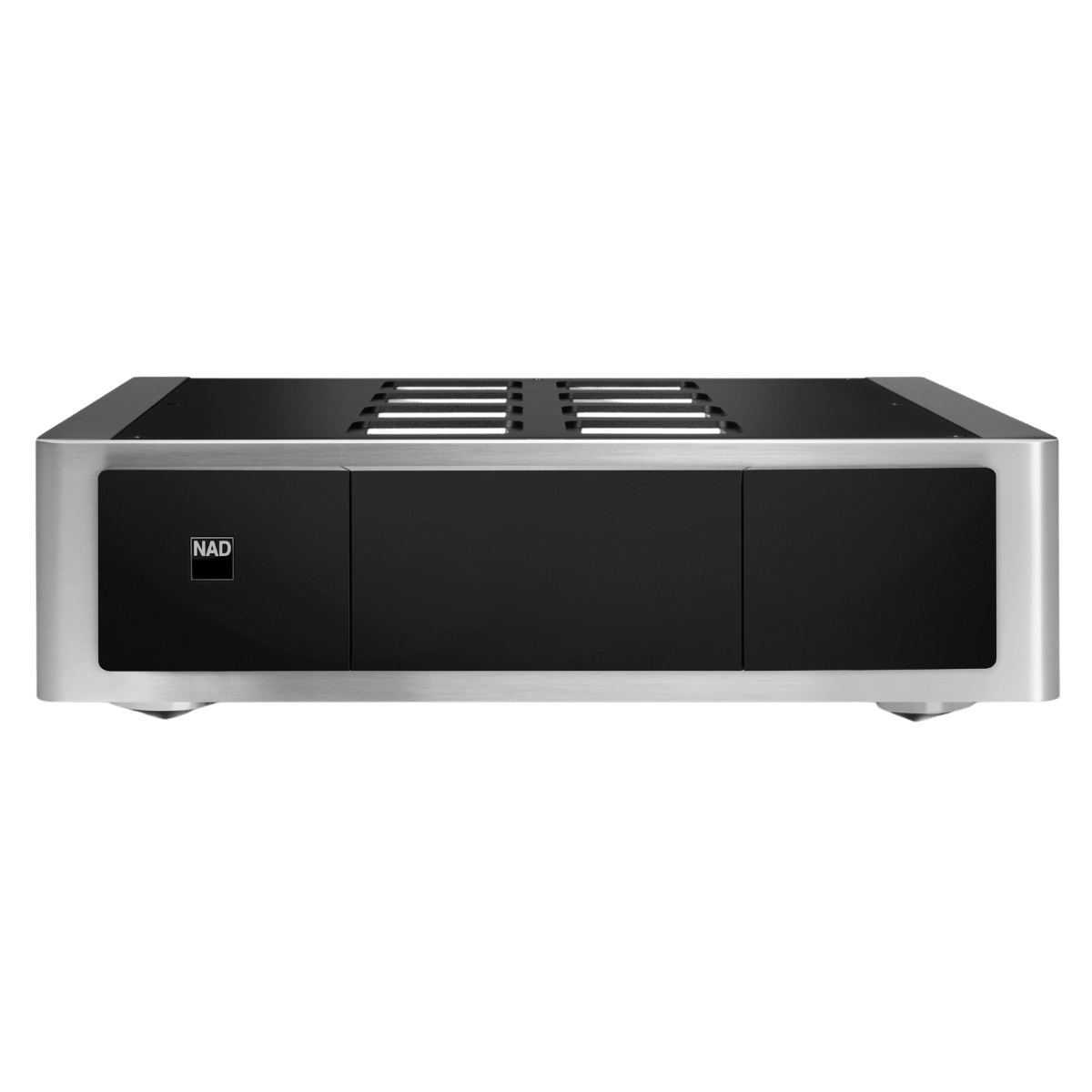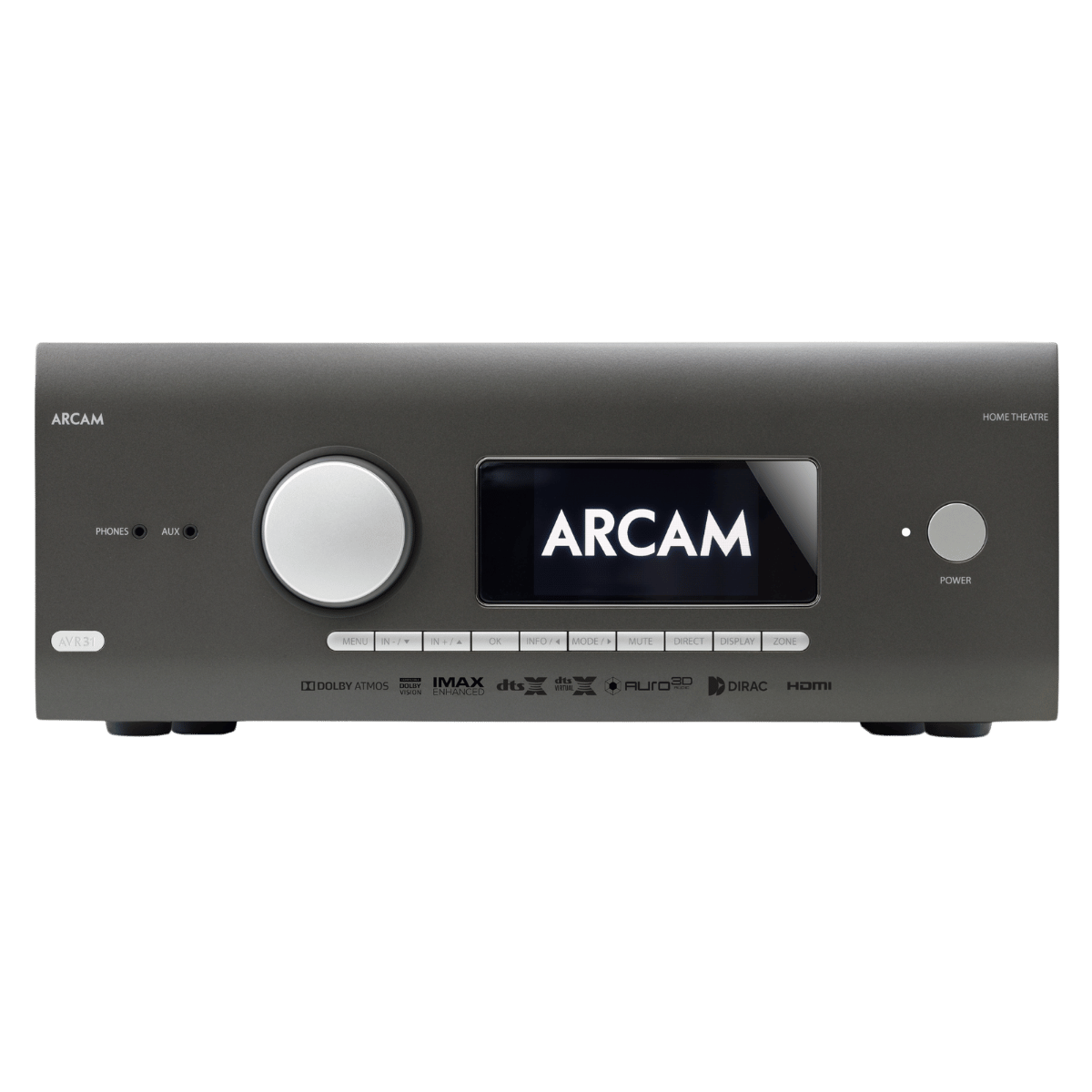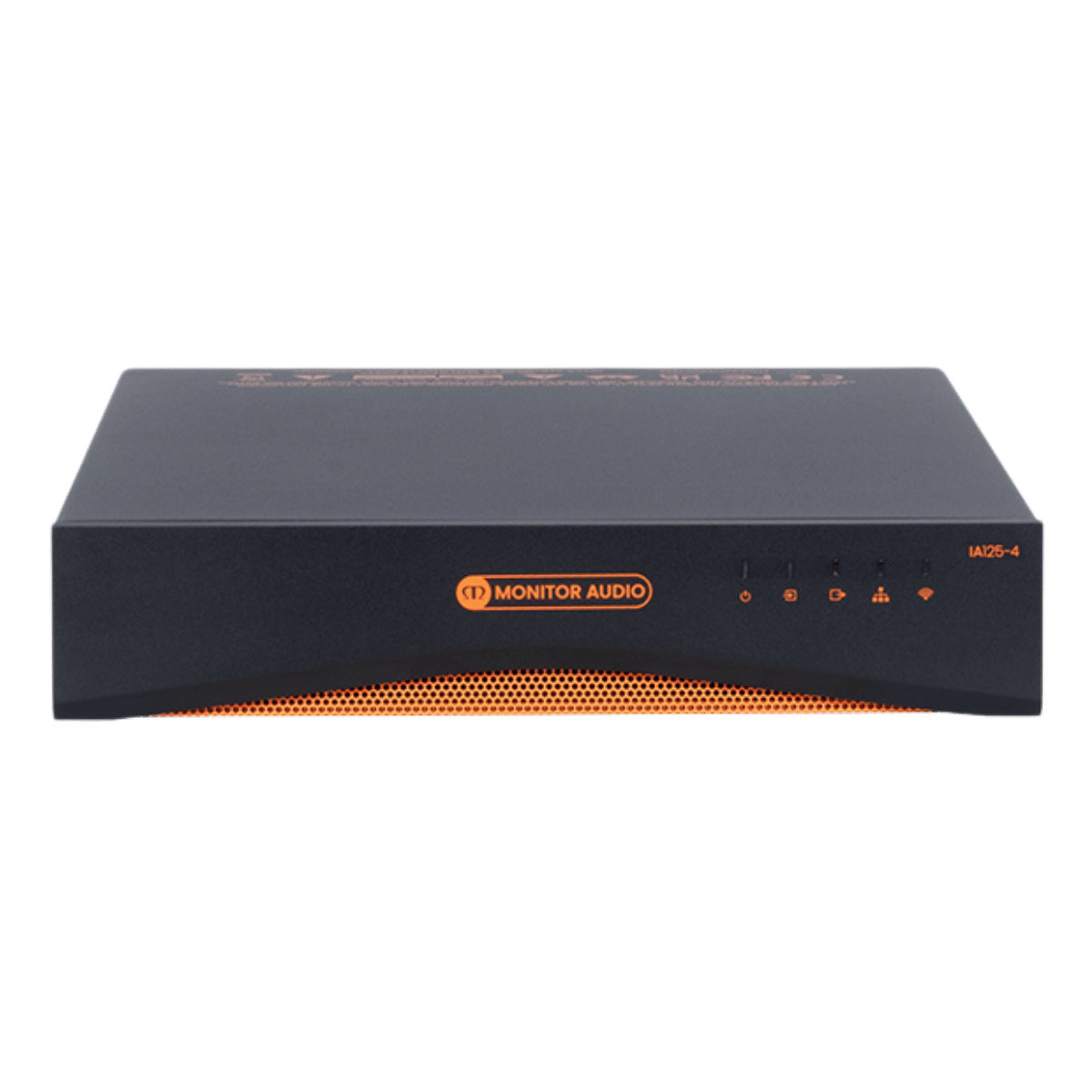

NARROW YOUR SEARCH FOR
AV Receivers & Home Theatre Amplifiers
Filters
54 products
TELL ME MORE ABOUT
AV Receivers & Home Theatre Amplifiers
Our collection of AV receivers and home theatre amplifiers is engineered to serve as the command centre for your home entertainment setup. These units are... Read More
Our collection of AV receivers and home theatre amplifiers is engineered to serve as the command centre for your home entertainment setup. These units are designed to manage audio and video signals with precision, offering compatibility with 4K video, support for advanced audio formats like Dolby Atmos and DTS:X, and integrated streaming services. With an emphasis on connectivity, they feature multiple HDMI inputs, Bluetooth, and Wi-Fi capabilities, alongside sophisticated acoustic calibration systems to optimize sound quality in any room.
From compact units ideal for smaller spaces to high-power models that can drive an extensive speaker setup, our range caters to both casual viewers and dedicated audiophiles. Each model is selected for its performance, reliability, and ability to integrate seamlessly with a variety of other home entertainment components.
Whether you're upgrading your current system or building a new one from scratch, our AV receivers and amplifiers provide the necessary foundation for a truly immersive audio-visual experience.
What is an AV Receiver and How Does It Work?
An AV (Audio/Video) Receiver is the central processing unit of a home theatre system, functioning as a hub that receives, interprets, and directs audio and video signals. It decodes incoming audio formats from various sources—like Blu-ray players, streaming devices, and turntables—amplifies the audio, and then sends it to the connected speakers, while simultaneously routing video signals to the television or projector.
The receiver's amplifier is a key component, boosting the low-voltage audio signals to a level that can power speakers, creating the sound you hear. Modern AV receivers support multiple channels (such as 5.1 or 7.1) for surround sound setups, and they often include advanced features like room calibration, which adjusts the sound output to the specific acoustics of your space.
On the video side, AV receivers typically offer several HDMI inputs to handle high-definition video signals, passing through 4K or even 8K content without degradation. They may also upscale lower-resolution video to match the capabilities of your display.
With built-in wireless connectivity options like Wi-Fi and Bluetooth, many AV receivers can stream music from online services or local networks. They are also equipped with digital signal processors (DSPs) to create sound fields that mimic different environments, from concert halls to stadiums, enhancing the listening experience.
The Key Features To Consider When Choosing An AV Receiver:
Every home cinema setup is a unique and personalised system - depending on a number of different key factors and considerations.
We always recommend chatting to one of our home theatre experts when setting up a system or looking to upgrade as the options and requirements can be nuanced and often overwhelming.
However, in the meantime - these are some of the key details you may want to mull over when dreaming about your perfect cinema setup:
Connectivity Options Modern AV receivers boast a plethora of connectivity options. They typically feature multiple HDMI inputs and outputs, supporting the latest standards for 4K and 8K video, HDR content, and eARC for superior audio return channels. Additionally, they offer various digital and analog audio inputs, USB ports for music playback, and outputs for zone 2 audio, allowing audio to be played in different rooms.
Surround Sound Processing AV receivers are equipped with advanced surround sound processing capabilities. They decode popular formats such as Dolby Atmos, DTS:X, and Auro-3D, providing an immersive listening experience. They also include proprietary sound enhancement technologies like Audyssey or YPAO for room acoustic calibration, ensuring the best sound quality for your specific environment.
Streaming and Multi-room Audio With built-in network connectivity through Ethernet or Wi-Fi, AV receivers can stream music from online services like Spotify, Tidal, or Apple Music. They often support multi-room audio systems like HEOS or MusicCast, allowing you to enjoy synchronized music across different rooms or play different tracks in each room.
User Interface and Control A user-friendly interface, either via an on-screen display or a dedicated app, makes setup and control straightforward. Many receivers also integrate with voice control systems like Amazon Alexa or Google Assistant, adding convenience to how you interact with your home theatre system.
Final Thoughts:
An AV receiver is the cornerstone of a home theatre system, merging the latest audio and video technologies to create an immersive entertainment experience. When choosing an AV receiver, it's essential to balance power, connectivity, audio decoding capabilities, and user-friendly features with your specific home theatre goals. Look for a receiver that not only aligns with your current setup but also offers room for growth as technology advances.
With thoughtful consideration of the key features and how they fit into your audio-visual landscape, you'll find an AV receiver that elevates your home cinema enjoyment to new heights, providing years of auditory and visual pleasure.
Some Quick FAQ:
What is the difference between a stereo receiver and an AV receiver?
While a stereo receiver is designed for two-channel audio, an AV receiver is designed to process and amplify audio and video signals from multiple sources to power a full-fledged home theatre system with multi-channel surround sound.
What is an 8K AV receiver?
An 8K AV receiver is designed to handle 8K video resolution, providing exceptional picture quality and supporting the latest advancements in home theatre technology.
What is HEOS in a receiver?
A: HEOS is a wireless multi-room audio technology developed by Denon. Receivers with HEOS support can wirelessly stream music to multiple rooms in your home, creating a seamless and versatile audio experience.
Can an AV receiver work with a gaming console?
Yes, most AV receivers offer multiple HDMI inputs, allowing you to easily connect and switch between various devices, including gaming consoles, Blu-ray players, and streaming devices.
What is the difference between a 5.1 and a 7.2 channel AV receiver?
The numbers in the channel designation refer to the number of speakers and subwoofers the receiver can accommodate. A 5.1 channel receiver supports a 5-speaker setup and 1 subwoofer, while a 7.2 channel receiver can power a 7-speaker setup and 2 subwoofers for a more immersive audio experience.
Can AV receivers support a 4K Ultra HD resolution?
A: Yes, many AV receivers are capable of supporting and processing 4K Ultra HD video signals, offering exceptional visual clarity and detail for a truly immersive home theatre experience.
NEED MORE GUIDANCE?
We are here to help
Check out some of our most commonly asked questions.
What do I need to play records?
Getting into vinyl? That’s awesome! We have some curated turntable Hi-Fi packs, with everything you'll need to get spinning right away. But if you want to build your own, read on for all the details.
First off, you'll need a turntable. It's the star of the show, so make sure it’s in good nick, with a decent cartridge and stylus (needle).
Next, there’s the phono preamp. Some turntables or amplifiers come with one built-in, but if yours doesn’t, you’ll need one as a bridge between your turntable and amplifier or powered speakers.
For the sound output, you’ve got two options. You can go with a traditional setup involving an integrated amplifier to take the signal from your phono preamp and power your passive speakers. Alternatively, you can opt for powered speakers, which have the amplifier built in – a handy all-in-one solution.
Speaking of speakers, good ones are a must for that rich, warm vinyl sound we all love. Whether you go for bookshelf or floorstanding speakers (or powered ones) depends on your space and budget.
And there you go! With these essentials, you’ll be ready to dive into your vinyl collection and enjoy that classic sound.
What can a wireless speaker do?
Wireless speakers are a game-changer for how you enjoy music and audio around the house. First off, they let you stream music wirelessly from your phone, tablet, or computer, so no more messing about with cables. You can easily play tunes from Spotify, Apple Music, Tidal or whatever streaming service you fancy.
If you’re into having music everywhere, many wireless speakers offer multi-room audio. You can sync them up to play the same music in every room or control what plays in each room individually, perfect for parties or just keeping the vibes consistent throughout your home.
Voice control is another brilliant feature. Many come with built-in assistants like Alexa, Google Assistant, or Siri. You can control your music with just your voice, ask for the weather, set reminders, or even control other smart home devices.
Sound quality? These little gadgets often pack a punch, delivering high-quality audio that can rival traditional wired setups. Some even offer 360-degree sound, filling the room with music from every angle.
In a nutshell, wireless speakers bring flexibility, convenience, and top-notch sound to your audio experience, making them a fantastic addition to any home. Whether you’re hosting a party, working from home, or just chilling out, they make listening to music a breeze.
How do you choose the right speaker & amplifier combination?
Deciding on a good speaker and amplifier combination is like putting together a perfect wine and cheese pairing—it’s all about balance and harmony. Here’s a conversational guide to help you through it:
First, consider your speakers. These are your main players, so you want to choose ones that fit your space and listening preferences. If you love deep bass and have a bit of room, floorstanding speakers might be your go-to. For smaller spaces or a more subtle look, bookshelf speakers are fantastic.
Now, onto the amplifier. This is where things get interesting. Your amp needs to match your speakers in terms of power and impedance. Check the wattage ratings on your speakers—your amplifier should provide enough power to drive them properly. Too little power and you’ll be missing out on sound quality; too much, and you risk damaging your speakers.
Next, think about the impedance (measured in ohms). Your amp and speakers should be compatible here too. Most speakers are rated at 8 ohms, but some can be 4 or 6. Make sure your amplifier can handle the impedance of your speakers to avoid any performance issues.
Another important factor is the type of sound you’re after. Some amps are known for their warm, rich tones, while others might be more neutral or even slightly bright. It’s a bit like choosing between a vinyl record and a digital stream or CD —each has its own charm. If possible, listen to different amp and speaker combinations to see what sounds best to your ears.
If purchasing online, note that at LE, we have made recommendations on speaker & amplifier combinations that we think sound wonderful together within each product listing.
Don’t forget about connectivity and features. Modern amplifiers often come with a host of options like Bluetooth, Wi-Fi streaming, and various inputs for all your devices. Make sure your amp has the inputs you need for your turntable, CD player, or streaming device.
Finally, consider your budget. Great sound doesn’t always mean breaking the bank, but be prepared to invest to get a quality setup that will last.
In the end, trust your ears. Listen to a few combinations if you can, and go with what makes your music sound the best to you.
Why do I need a headphone amplifier?
If you’re diving into the world of high-quality audio, a headphone amplifier can be a real game-changer. Think of it like this: most standard devices, like your smartphone or laptop, just don’t have the oomph needed to drive headphones properly. They might get the job done, but they won’t do your music justice. A headphone amp gives your headphones the power they need, ensuring you get the volume and clarity that really makes your music shine.
It’s not just about making things louder, either. A good headphone amp can significantly improve sound quality. You’ll get clearer highs, richer mids, and tighter bass, making your favourite tracks sound even better. You might notice details you’ve never heard before, especially if you’re listening to high-resolution audio files.
Premium headphones often have higher impedance, meaning they require more power than your typical audio source can provide. A headphone amp can handle this with ease, making sure your headphones perform at their absolute best. Plus, many amps come with extra features like bass boost, equalisation, and gain control, giving you more ways to tweak the sound to your liking.
In short, if you’re passionate about your music and want to hear it in the best possible way, a headphone amplifier is definitely worth considering. It’s all about unlocking the full potential of your gear and really getting the most out of your listening experience.
Where should I start when designing a home cinema?
Designing your own home cinema? That's awesome! We are here to help walk you through the process, but as a starting point, here’s what we would recommend and where to kick things off:
First up, pick your spot. For most people this is your existing lounge room, but if you have an underused garage, or spare bedroom, then you have an opportunity to create your very own true Home Cinema experience. Find a room that’s just right—not too cramped and ideally away from noisy areas. This sets the stage for that immersive movie experience.
Next, think about how you’ll set things up. Plan where your seats will go and where to place your projector screen for the best view from every angle. It’s all about creating that comfy, cinematic vibe.
Sound matters, too. Consider if you want a wireless system for simplicity or a full surround sound speaker system with AV receiver for that surround-sound thrill. Think about soundproofing or adding acoustic panels or thick carpets to really amp up the audio quality of the room.
Now, onto the screen. Decide between a crisp TV or a projector setup, depending on your room size and personal style. Maybe even throw in some dimmable lights or smart lighting to set the mood just right.
And hey, don’t forget comfort. Invest in plush cinema seating and think about the décor—whether it’s movie posters, blackout curtains, or popcorn machine & bar area, whatever gives you that true cinema feel.
Lastly, tech it up! Make sure everything—from your Blu-Ray player & Apple TV to your gaming consoles—is set to sync perfectly with your new setup.
With these steps, you’re on your way to creating a home cinema that’s not just a space, but an experience. Enjoy movie nights like never before!


